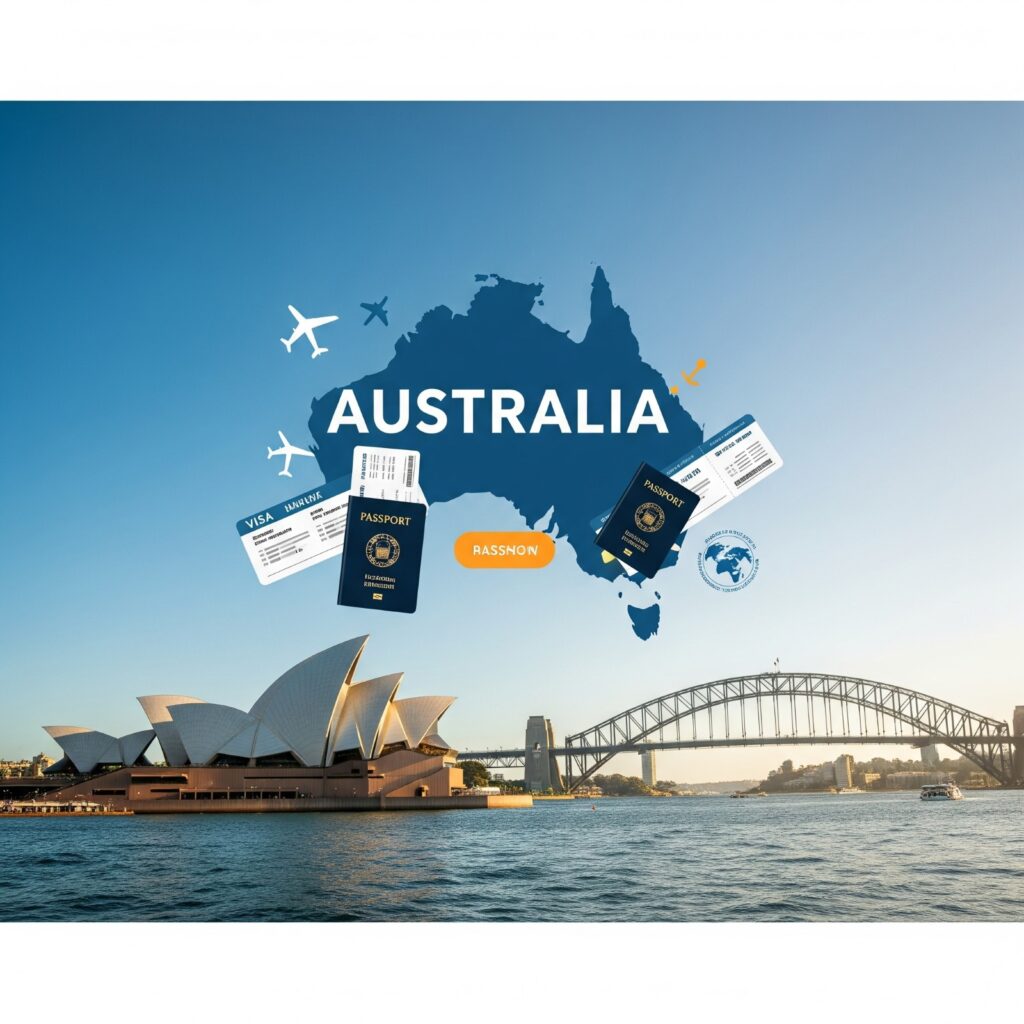Understanding the various types of visas is essential for anyone planning to travel, study, work, or settle in another country. Visas determine your purpose of entry, your duration of stay, and what you can legally do while in a foreign nation.
This blog provides a comprehensive guide to the four most common types of visas: Student Visas, Work Visas, Permanent Residency (PR) Visas, and Visitor Visas. By the end, you’ll know which one suits your purpose and how to begin your visa application process.

What Is a Visa?
A visa is an official endorsement on your passport that permits you to enter, stay in, or leave a country for a specific purpose and time period. Each country has its own visa policies and categories depending on the intention of the traveler.
1. Student Visas
What is a Student Visa?
A student visa is issued to individuals who want to pursue academic or vocational education in another country. It allows you to enrol in a certified educational institution.
Who Needs a Student Visa?
Anyone wishing to study abroad in full-time programs such as undergraduate, postgraduate, diploma, or language courses.
Common Countries Offering Student Visas
- USA (F-1 Visa)
- UK (Student Route)
- Canada (Study Permit)
- Australia (Subclass 500)
Eligibility Criteria
- Proof of admission from a recognized educational institution
- Financial proof to cover tuition and living expenses
- Language proficiency (e.g., IELTS, TOEFL)
- Valid passport
- Clean criminal record
Documents Required
- Passport
- Admission letter
- Financial documents
- Proof of accommodation
- Visa application form
- Visa fee receipt
- Health insurance (where applicable)
Application Process
- Get admission in a recognized institution
- Gather necessary documents
- Pay the visa fee
- Fill out and submit the visa application
- Attend the visa interview (if required)
- Wait for visa approval
Benefits of Student Visa
- Access to world-class education
- Permission to work part-time in most countries
- Pathway to post-study work permits
- Cultural exchange and global exposure
2. Work Visas
What is a Work Visa?
A work visa permits you to take up employment in a foreign country. Some are temporary; others can lead to permanent residency.
Who Needs a Work Visa?
Anyone planning to work legally in another country for a fixed or indefinite period.
Common Work Visa Types
- H-1B (USA) – for skilled workers
- Tier 2 Skilled Worker Visa (UK)
- TSS Visa (Australia)
- Employer-Specific Work Permit (Canada)
Eligibility Criteria
- Valid job offer from a foreign employer
- Relevant qualifications and experience
- Labor Market Impact Assessment (for some countries)
- Medical and police clearance certificates
Documents Required
- Job offer letter
- Resume and qualifications
- Passport
- Employment contract
- Proof of work experience
- Visa application form
- Visa fee receipt
Application Process
- Secure a job offer
- Employer may file a sponsorship or application on your behalf
- Submit your visa application
- Attend interviews and medical checks
- Receive visa approval
Benefits of Work Visa
- Legal right to work abroad
- Competitive salary and career growth
- Pathway to PR or citizenship
- Opportunity to bring dependents in many cases
3. Permanent Residency (PR) Visas
What is a PR Visa?
A PR visa allows you to live and work in a country permanently. Unlike temporary visas, PR holders enjoy many rights similar to citizens.
Who Needs a PR Visa?
Anyone wishing to settle abroad for the long term, often after studying or working there.
Popular PR Programs
- Green Card (USA)
- Express Entry (Canada)
- Skilled Independent Visa (Australia)
- ILR (Indefinite Leave to Remain – UK)
Eligibility Criteria
- Long-term employment or education history in the country
- Family sponsorship
- Point-based assessment (skills, age, language)
- Clean record and health checks
Documents Required
- Passport
- Proof of residence or employment
- Police clearance
- Medical reports
- Income tax returns
- Language test results
Application Process
- Submit an Expression of Interest (EOI)
- Get an invitation to apply
- Provide necessary documents and fees
- Attend medical and police checks
- Get PR confirmation
Benefits of PR Visa
- Permanent residency status
- Access to healthcare, education, and social benefits
- No restrictions on employment
- Route to citizenship
4. Visitor Visas
What is a Visitor Visa?
A visitor visa allows you to travel to another country for a short-term stay for tourism, visiting family, or attending business meetings.
Who Needs a Visitor Visa?
- Tourists
- People visiting family or friends
- Short-term business travelers
- Medical treatment visitors
Common Visitor Visa Types
- B-2 Visa (USA) – Tourist
- Standard Visitor Visa (UK)
- Subclass 600 (Australia)
- Temporary Resident Visa (Canada)
Eligibility Criteria
- Intent to return home after the visit
- Proof of funds
- Travel itinerary
- No intention to work or study
Documents Required
- Passport
- Travel bookings
- Hotel reservations or invitation letter
- Financial statements
- Visa application form and fee
Application Process
- Fill out the visa form
- Schedule a visa appointment
- Submit required documents
- Attend interview if needed
- Await visa decision
Benefits of Visitor Visa
- Explore new countries
- Visit family and friends
- Attend conferences or business meetings
- Medical treatment access abroad
How to Choose the Right Visa Type
Choosing the right visa depends on:
- Your purpose (study, work, travel, settle)
- Duration of your stay
- Your qualifications and financial status
- Your intent to stay temporarily or permanently
If you’re unsure, consulting a visa expert can save time and help avoid rejections.
Common Visa Mistakes to Avoid
- Providing incomplete or false information
- Not meeting the financial requirements
- Overstaying your visa period
- Applying under the wrong category
- Not preparing for the interview properly
Final Thoughts
Understanding the different types of visas is crucial before you plan your move or travel abroad. Whether you’re looking to study overseas, build your career, settle permanently, or enjoy a short vacation, each visa serves a unique purpose and comes with specific rules. By choosing the correct visa category and following the right application steps, your international journey can begin smoothly and legally.





